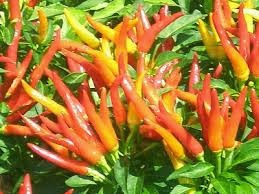Hot peppers contain a unique nutrient that can benefit your health. Capsaicin is the name given to this nutrient. It gives hot peppers and hot sauce their heat. Capsaicin has some unexpected health benefits that researchers are still investigating.
Continue reading to learn how hot peppers and hot sauce can benefit your diet and your health.
CAN THE CAPSAICIN IN HOT PEPPERS HELP IN THE FIGHT AGAINST CANCER?
Capsaicin, according to researchers at Wayne State University School of Medicine, inhibits the growth of human breast and leukemia cancer cells. In fact, the study found that capsaicin aids in the death of cancer cells.
But don't worry, capsaicin does not kill all of your body's cells. These effects were only observed in cancer cells.
Capsaicin has the potential to treat cancers other than leukemia and breast cancer. According to a study published in the Journal of the National Cancer Institute, capsaicin causes tumor cells to commit suicide. Capsaicin interacts with neural receptors, triggering a series of chemical reactions. Apoptosis, or a cell's way of shutting down, occurs in tumor cells as a result.
PREVENT DIABETES AND IMPROVE HEART HEALTH
Could hot peppers do more for your health than just prevent cancer? Yes, according to research published by the Federation of European Biochemical Societies.
According to the study, capsaicin improves heart health and aids in the prevention of diabetes.
Excess weight gain causes inflammation, which contributes to type II diabetes and atherosclerosis. Atherosclerosis can lead to complications like heart disease. However, adipokines help to reduce inflammation. Capsaicin stimulates adipokines. Keep capsaicin in your diet to help your body protect itself from disease.
IS IT POSSIBLE TO LOSE WEIGHT WITH HOT PEPPERS?
According to research published in the British Journal of Nutrition, capsaicin may make you feel less hungry.
Capsaicin may help people eat fewer calories from various sources, according to research. Capsaicin reduced the amount of fat and protein consumed in one study involving Japanese women. Another study with Caucasian men found that capsaicin reduced carbohydrate consumption.
At the same time, capsaicin boosts your metabolism and causes you to burn more calories. Unfortunately, this results in a negligible amount of calories burned, making it less compelling than capsaicin's appetite suppressant effect.
Also, hot peppers and hot sauce are low-calorie ways to add flavor to your food. Hot sauce contains no calories and provides more flavor than most other condiments.
CAN PEPPERS HELP TO REDUCE BLOOD PRESSURE?
High blood pressure increases your chances of having a heart attack, having heart failure, or dying suddenly.High blood pressure is caused by a high sodium diet, a lack of exercise, and genetics. However, it appears that hot peppers may be able to assist.
According to the British Cardiovascular Society, capsaicin lowers blood pressure. These advantages are greatest for people who are predisposed to hypertension.
According to the researchers, this is due to capsaicin's beneficial effect on the kidney. In other words, hot peppers cause the kidneys to excrete more sodium from the body.
This is not to say that eating hot peppers will eliminate excess sodium from your diet. Hot peppers, on the other hand, may help prevent an unhealthy buildup of sodium.
GET THE HEALTH BENEFITS OF HOT PEPPERS NOW!
Hot peppers have been around for a long time. Capsaicin has been shown by researchers to improve heart health, prevent diabetes, and prevent cancer. Hot peppers can actually lower your blood pressure and make you feel less hungry.
There has never been a simpler way to spice up your food than with hot peppers. The best news is that hot sauce has these advantages because capsaicin provides the heat in hot sauce. So, crack open a bottle of hot sauce and enjoy!

















